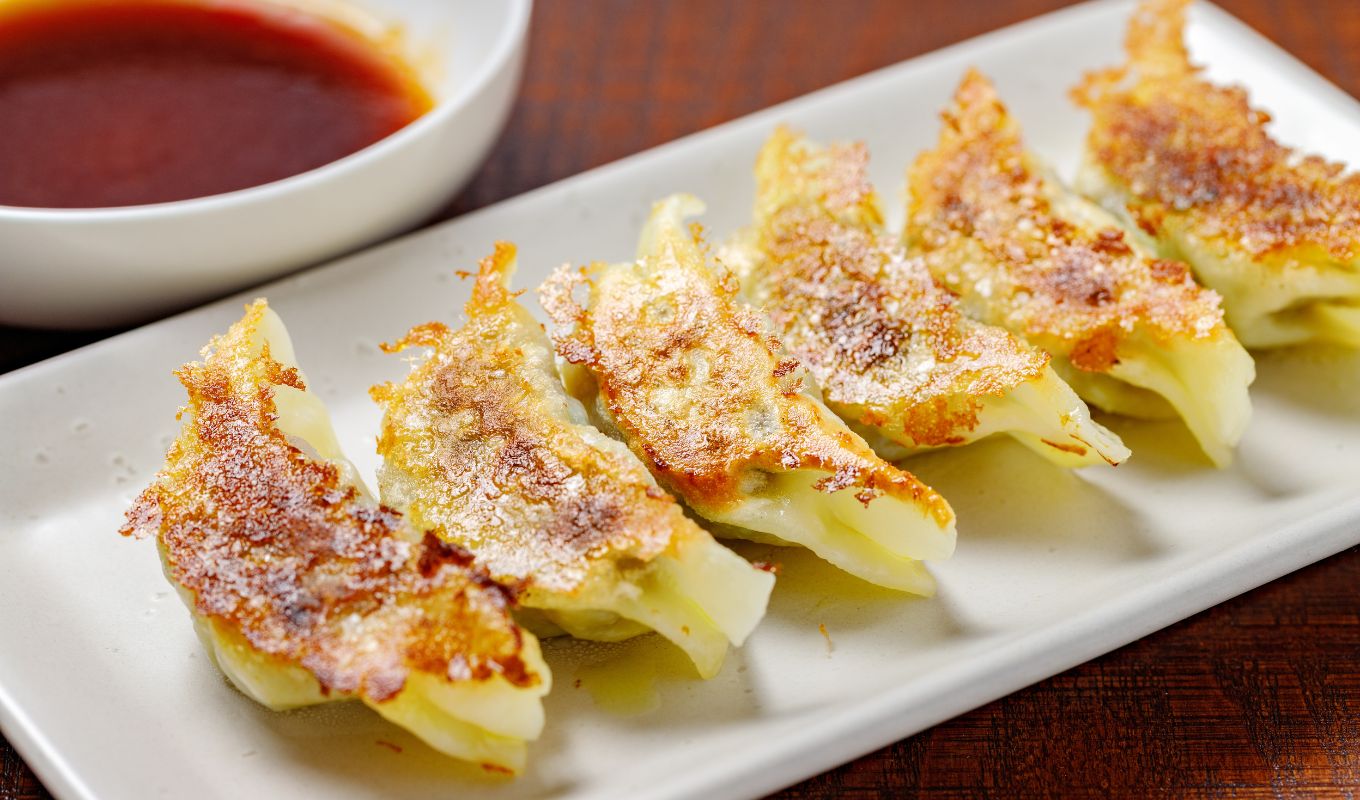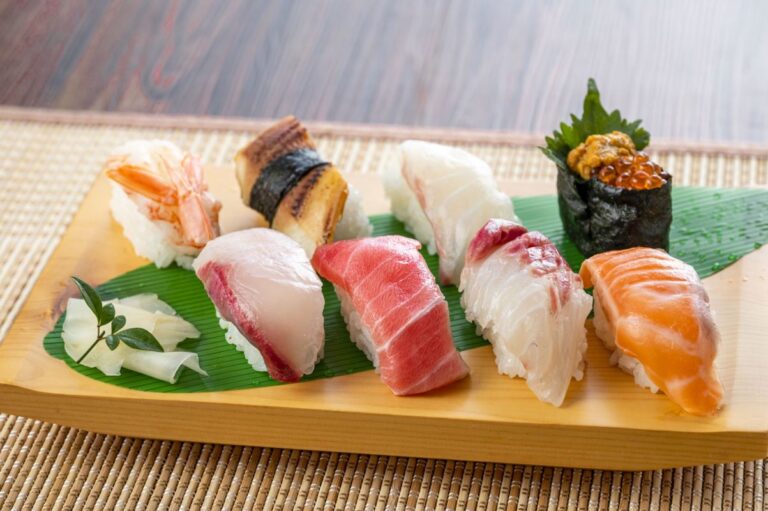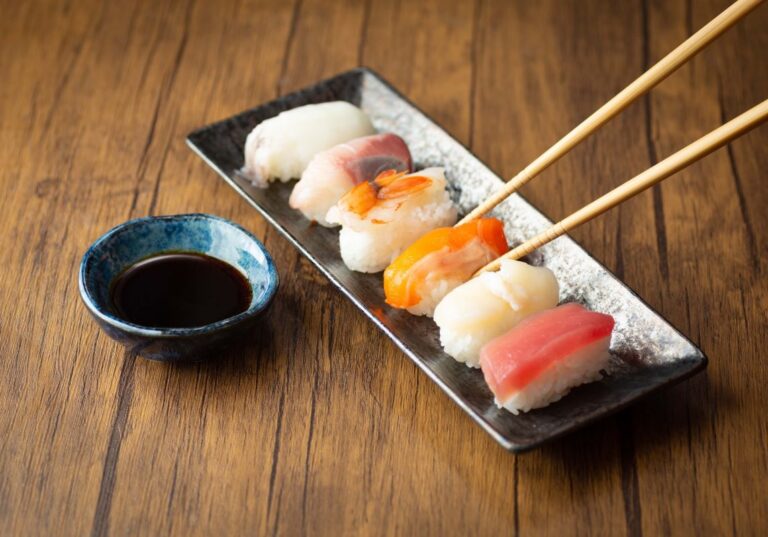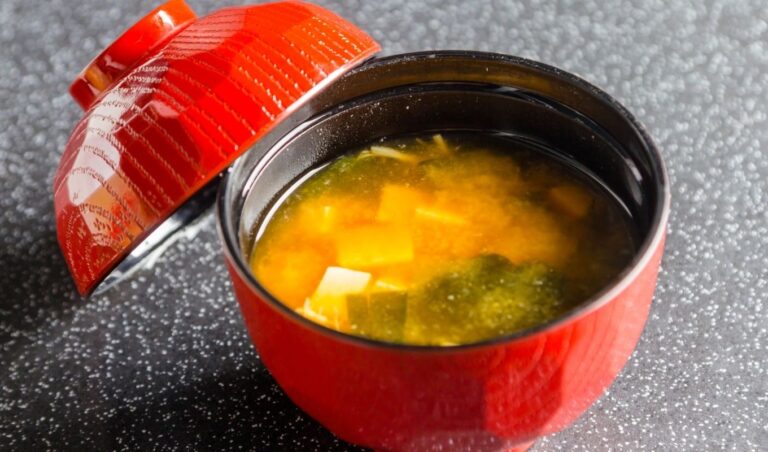First you fry your dumpling on a frying pan until it’s crispy and brown on one side. Then you fill the pot with water and cover it with a lid, steaming the top of the dumpling. Then you take a bite… Or maybe you wait until it’s cool before you dig in. Perhaps you toss it into soup or dip it into sauce. Gyoza is a versatile food that can be eaten both hot and cold, as an appetizer, a main course, or a side dish!
Sometimes called “Japanese potstickers,” gyoza are stuffed dumplings. Usually pan-fried, gyoza can also be deep-fried, steamed, boiled, or served in soup. While most of the flour dough retains its white color and soft texture after frying, the bottom portions of the gyoza tend to be hard, brown, and crunchy. Stuffed with a variety of fillings depending on the consumer’s tastes, gyoza are often served with a tare dipping sauce made of soy sauce, rice vinegar, raayu (a type of chili pepper sesame oil) and other seasonings.
History Of Gyoza
Gyoza are derived from a Chinese potsticker called jiaozi. Compared to the Chinese jiaozi, Japanese gyoza dumplings are thinner and are seasoned with soy and salt. In addition, they’re somewhat more garlicky. Although many Chinese-based foods were introduced to Japan near the beginning of the millennium, gyoza did not enter the country until the late 1930s or 40s, likely after the Japanese invasion of China during World War II.
Gyoza Fillings
The most popular gyoza fillings include pork, cabbage, garlic, and chives. It’s not unheard of to include ground beef, poultry, scallions, ginger, carrots, tuna, mayonnaise, corn, shrimp, tomatoes, clams, curry, and/or other vegetables, too. Gyoza can also be dessert! Rarer fillings include chocolate and bananas and red bean paste.
Gyoza Stadium and the Gyoza Dog
Gyoza is so popular that in Osaka, there’s a “Naniwa Gyoza Stadium“, a so-called “gyoza theme park” in Namco’s Namjatown, a theme park for Namco games. The Gyoza Stadium is actually more of a food court than a theme park, with different varieties of gyoza recipes from around the country, but the atmosphere (including music and décor) is similar to 1950s Japan.
At the Gyoza Stadium, there’s even a small dining area decked out like a typical 1950s Japanese living room, with tatami mats and a black and white TV broadcasting old Japanese programs! From multi-color gyoza to ramen noodles served with gyoza, if there’s a gyoza recipe from somewhere in Japan, it’s probably sold at the Gyoza Stadium!
At DisneySea in Tokyo, there’s an infamous “gyoza dog”—a gyoza as big as a hot dog! Although admission may be pricey, you may as well go all out while you’re there and look for the gyo



